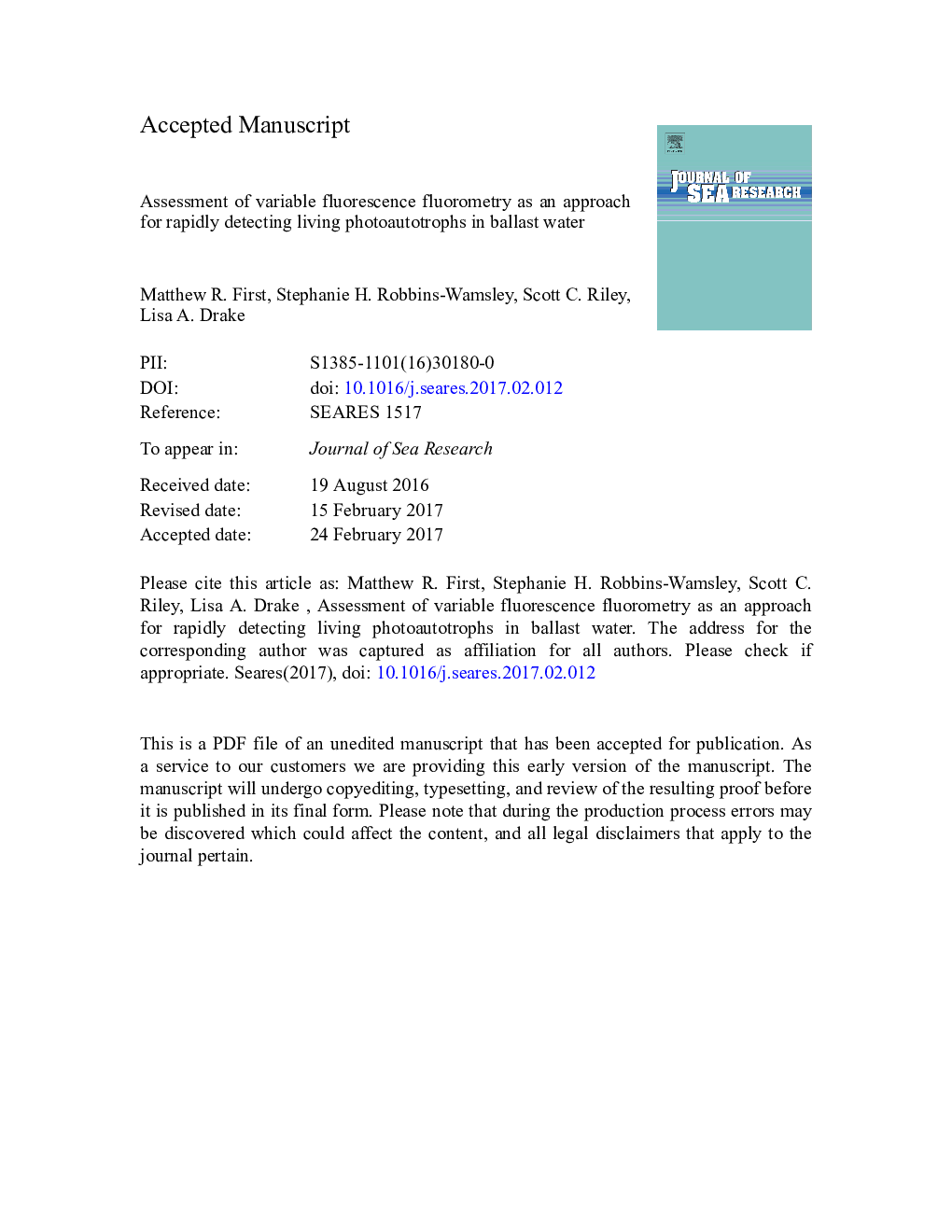| Article ID | Journal | Published Year | Pages | File Type |
|---|---|---|---|---|
| 8886154 | Journal of Sea Research | 2018 | 27 Pages |
Abstract
Variable fluorescence fluorometry, an analytical approach that estimates the fluorescence yield of chlorophyll a (F0, a proximal measure of algal concentration) and photochemical yield (FV/FM, an indicator of the physiological status of algae) was evaluated as a means to rapidly assess photoautotrophs. Specifically, it was used to gauge the efficacy of ballast water treatment designed to reduce the transport and delivery of potentially invasive organisms. A phytoflagellate, Tetraselmis spp. (10-12 μm) and mixed communities of ambient protists were examined in both laboratory experiments and large-scale field trials simulating 5-d hold times in mock ballast tanks. In laboratory incubations, ambient organisms held in the dark exhibited declining F0 and FV/FM measurements relative to organisms held under lighted conditions. In field experiments, increases and decreases in F0 and FV/FM over the tank hold time corresponded to those of microscope counts of organisms in two of three trials. In the third trial, concentrations of organisms â¥Â 10 and < 50 μm (presumably heterotrophic protists) increased while F0 and FV/FM decreased. Rapid and sensitive, variable fluorescence fluorometry is appropriate for detecting changes in organism concentrations and physiological status in samples dominated by microalgae. Changes in the heterotrophic community, which may become more prevalent in light-limited ballast tanks, would not be detected via variable fluorescence fluorometry, however.
Related Topics
Physical Sciences and Engineering
Earth and Planetary Sciences
Oceanography
Authors
Matthew R. First, Stephanie H. Robbins-Wamsley, Scott C. Riley, Lisa A. Drake,
